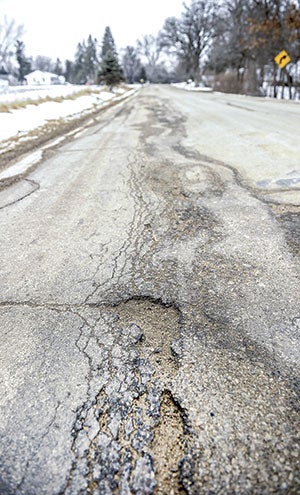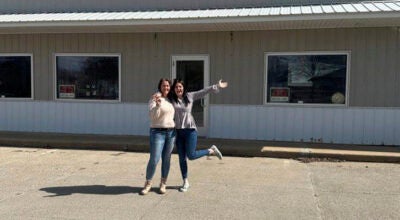County board ticking ahead on road talks
Published 10:27 am Wednesday, March 30, 2016
Tuesday brought another meeting and another small step forward on the Mower County board’s efforts to seek community feedback on a proposed half-cent sales tax for its underfunded roads.
Three commissioners indicated during the board’s regular meeting they think the county should continue discussing ways to address the county’s roughly $100 million need for road and bridge projects over the next decade and an estimated funding shortfall of $6.5 million per year, but two commissioners were absent from the meeting.
“We’re sliding backwards every day we wait as far as I’m concerned,” Commissioner Tim Gabrielson said.
On March 1, Public Works Director Mike Hanson outlined the county’s road and bridge funding shortfall for the board and discussed how the county board could go about holding public hearings. That process would eventually lead to a vote to approve or reject a half-cent sales tax to fund specific road projects — a vote that would likely come in August so the tax could be enacted for 2017.
Board members and staff met with Mower County township and rural city leaders earlier this month, and felt the majority wanted them to continue exploring the tax.
County Coordinator Craig Oscarson asked the board for direction on whether to move ahead with a proposed timeline.
“We need to know: Is this a dead issue or are you in limbo?” Oscarson said.
“I think we should proceed,” Commissioner Mike Ankeny answered.
Gabrielson and Commissioner Polly Glynn largely agreed to move forward, though Commissions Jerry Reinartz and Tony Bennett were both absent.

Asphalt is missing at several areas along Fourth Drive Southwest. The board is looking at continued discussion on a half-cent sales tax. Herald file photo
Reinartz has previously said he’d wish for the board to wait until after the 2016 legislative session to wait for more possible funding.
Reinartz and other commissioners have also been outspoken in their views the Legislature should be funding the road issue and not passing the costs down to counties.
In 2013, the state approved a wheelage tax and a half-cent sales tax as options for counties to fund local road and bridge projects, but county officials have called it a way for the state to pass off road funding to local government. Mower commissioners approved a $10 wheelage tax in June 2013, which is paid when drivers renew licenses and is estimated to bring in $357,000 a year.
However, Hanson previously told the board that any legislative action almost certainly won’t be enough to completely eliminate the county’s project road and bridge deficits, a sentiment Ankeny echoed Tuesday.
“Even if the legislature does something, it’s going to be minimal,” Ankeny said.
“We’re still going to have a big shortfall,” Gabrielson added.
In fact, a half-cent sales tax would bring in about $1.5 million a year, which would only slim the county’s projected annual funding shortfall from $6.5 million a year to about $5 million a year.
Hanson has previously told the board the county could some paved roads or simply be unable to pave them in the future, because current funding methods are unsustainable.
Along with the sales tax, Glynn asked the board to eventually discuss dedicating the county’s projected $450,000 to $500,000 in additional wind production tax credit funding from the recently completed Pleasant Valley Wind Farm to roads starting in 2017.
In 2014, just under $1.6 million went to Mower County based on 2013 energy production — $1.27 to Mower County and about $318,000 was distributed among townships with towers.
Right now, the production tax money goes into the county’s general fund to offset property taxes, but rural residents have routinely asked for that money to go toward rural roads since wind farms are in the rural areas.
Gabrielson said he’d be open to such discussions, as he’s asked other county leaders in regional meetings and they said their counties are at least open to considering similar options.
With Reinartz, Bennett and Hanson all absent from Tuesday’s meeting, Oscarson said the board will likely discuss the issue again when everyone is present.
Two board members and staff are next slated to seek input at an Austin Area Chamber of Commerce meeting in May, and commissioners indicated they may seek more ways to seek public input around that time.





